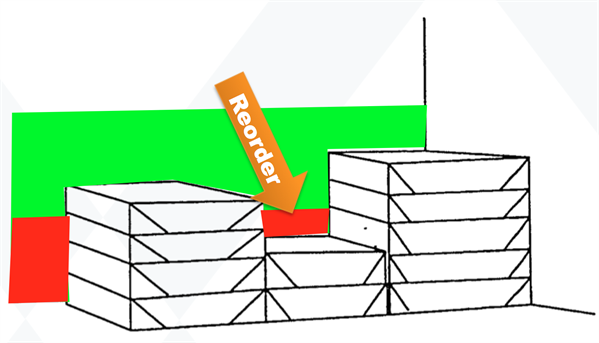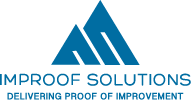3 TIPS on running productive meetings

Last week I talked about what makes meeting rooms effective.
This week I will share some ideas about making actual meetings more productive.
First, I want to point out that there are many different types of meetings: status updates, feedback sessions, trainings, decision making meetings, process improvement meetings, … Every type of meeting has (or should have) a different approach. We will talk about meeting structures in a later stage, in this article I will focus on process improvement meetings. In these meetings usually a group of people sit together to solve problems, and improve business processes. The duration varies between half a day or several days, depending on the scope.
A lot has been written about how to structure these meetings, who should be the participants, how to define a project charter, etc.
I want to focus on some practical things that are often overlooked.
TIP1: Kanban your meeting consumables

It still happens way too often that precious meeting time is lost because of trivial supplies missing. You want to use the whiteboard to draw a flow diagram, but … damn, only flipchart markers. Or you want to do a brainstorm activity but the large post-its just ran out. In all of these situation there is “stock problem” that can easily be avoided!
More and more organizations implement kanban systems for consumables on the workfloor, but I rarely see a well functioning kanban system for meeting room consumables! (For Lean newbies, a kanban system sends a signal to replenish a good every time it is consumed. https://en.wikipedia.org/wiki/Kanban)
One other thing, from my experience, you can never have too many markers, post-its, magnets, … , only too few!
TIP 2: F&B (Fruit and Beverages)
I still encounter meeting rooms (mostly in production environments) where there is no coffee machine in the room, sometimes even no water! This is a classic example of penny wise, pound foolish!
Problem solving meetings require brain power, and the brain needs to be fueled! Therefore make sure that participants ALWAYS have access to basic drinks and snacks in the meeting room. If you have to take a break every time someone is thirsty or hungry you loose productivity. If people are thirsty or hungry and you don’t go on a break, you loose productivity!
My rule of thumb: provide what makes participants happy. You don’t have to go as far as Google does providing Michelin Star cooks in your office, but some healthy snacks (for example fruit) and basic drinks (coffee, tea, water) are always a good investment. It is difficult enough to keep the morale high in the heat of discussions, so provide all the other things that can help!
TIP 3: Delegate Side Responsibilities
Many things are written about the roles and responsibilities of a Meeting Leader and participants.
But besides the classic roles, there are also “Side roles”. Side roles are extra responsibilities that are often overlooked and create bottlenecks in the meeting process.
Here are some examples of side responsibilities
Morale Officer:
This person is good at feeling the energy level in the room.. It is his/her responsibility to decide when to go on a break or when to impose a time-out when a discussion goes off track.
Time Officer:
Every time a meeting breaks, there should be one person responsible for making sure everyone is back at the agreed hour. Ideally the Time Officer should also measure the lost time if people are late. (Meeting Waste Analysis) This can be done multiplying the number of minutes by the # participants waiting.
Material Officer:
Making sure all meeting consumables (including F&B) are always in stock. As discussed before, a Kanban system can facilitate this!
Picture Officer:
In charge of making pictures of everything that is written on whiteboards and flip charts.
Usually the Team Leader has all these extra responsibilities. But there it often goes wrong. Because the Team Leader is often intellectually involved in the meeting, it is very hard to keep track of all these other tasks. In an ideal world there is a full time facilitator that is not involved in the actual discussions that takes on all these side roles. But this is not always possible. Also, the facilitator has to have enough maturity/authority over the participants.
An alternative could be that the Team Leader delegates these roles across his team. This can go quickly and can be done as an ice breaking exercise at the beginning of the meeting. He can just present the different roles and ask if participants have a preference. If no-one volunteers, he can assign them himself.
I realize that the third tip is out of the box and could be out of your comfort zone. But if you want to give it a try, let us know how it goes!
By Stefaan Claes, Consultant at Improof Solutions

